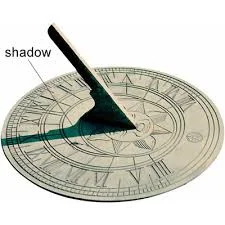Search This Blog
Learning ideas for parents and caregivers educating toddlers and little homeschoolers!
Featured
- Get link
- X
- Other Apps
Why Do We Tell Time the Way We Do?
Why Do We Tell Time the Way We Do? A Fun Story for Kids!
Have you ever wondered why we tell time the way we do? Every day, we use clocks, watches, and phones to see what time it is. But a long time ago, people didn’t have clocks like we do today. Let’s go on a fun adventure to learn how time-telling began and why it’s so important!
 |
| Wooden Teaching Clock Toy |
How People Told Time Long, Long Ago
Before there were clocks, people still needed to know what time it was, but they used different methods than what we use today.
1. Watching the Sun: The sun was like a giant clock in the sky. When the sun rose, people knew it was morning. When it was high up in the sky, it was noon. And when it started setting, it was evening. This worked great during the day, but what about at night?
 |
| Ancient Sundial |
2. Sundials: After noticing how shadows changed as the sun moved, people invented sundials. A sundial is a stick or object placed in the sun. The shadow it makes moves as the sun moves, helping people tell what time it is. However, sundials only worked when the sun was shining.
3. Water and Candle Clocks: Some people used water clocks that measured time by letting water drip at a steady pace from one container to another. Others used candles that burned for a certain number of hours. These clocks were useful at night or indoors, but they weren’t very precise.
4. The Hourglass: One of the most famous early time devices is the hourglass! An hourglass is a glass container shaped like the number 8 with sand in the top half. The sand slowly trickles down to the bottom through a small hole. When all the sand has fallen, a certain amount of time has passed – like one hour! Hourglasses were great because they didn’t rely on sunlight and could be used anywhere, whether it was day or night.
Who Invented the Time System We Use Today?
Now, let’s talk about who invented the time system we use today. The idea of dividing the day into hours, minutes, and seconds started thousands of years ago in a place called Mesopotamia (in modern-day Iraq). The people there loved the number 60, which is why we have 60 seconds in a minute and 60 minutes in an hour.
Later, around 1300 AD, people in Europe began making mechanical clocks that chimed every hour. This led to the clocks we know today with gears and hands that point to numbers.
Why Do We Tell Time Like This?
Today, we use a 12-hour system, with clocks divided into 12 parts for each half of the day – from midnight to noon (AM) and from noon to midnight (PM). But why 12 hours? This idea came from Ancient Egyptians who divided the day based on how the stars moved at night and how the sun moved during the day. This method worked so well that it became popular all over the world!
We also use clocks with two hands: the short hand tells us the hour, and the long hand tells us the minutes. Digital clocks show time in numbers like 3:45, which is much easier to read.
Why Knowing the Time Is Important
Knowing the time is important for many reasons:
a. It tells us when to wake up, when to eat, and when to go to bed.
b. It helps us know when school starts and when it’s time to play.
c. It lets us plan activities like watching our favorite shows, meeting friends, or playing games.
Without time, our days would be confusing! No one would know when to do things or how long to spend on them. That’s why our time system is so helpful.
The Journey from the Past to Now
The way we tell time today didn’t happen overnight. It took thousands of years and many clever inventions, from watching the sun and using sundials, to pouring water and flipping hourglasses. All of these ideas helped shape the clocks and watches we rely on now.
Take Away
And there you have it! The story of how time-telling evolved and why it’s so important to all of us today.
Whether you’re checking the time to see when it’s lunch or looking at the clock to know when playtime is over, you’re using a system that’s been around for a long, long time.
So, the next time you look at a clock, remember that it’s not just about numbers and ticking hands. It’s the result of many cool inventions and smart people who helped us understand time better!
- Get link
- X
- Other Apps
Popular Posts
🇨🇦 100 Field Trip Ideas for Kids Manitoba
- Get link
- X
- Other Apps
The Wild Robot Movie vs. The Wild Robot Book
- Get link
- X
- Other Apps


Comments
Post a Comment